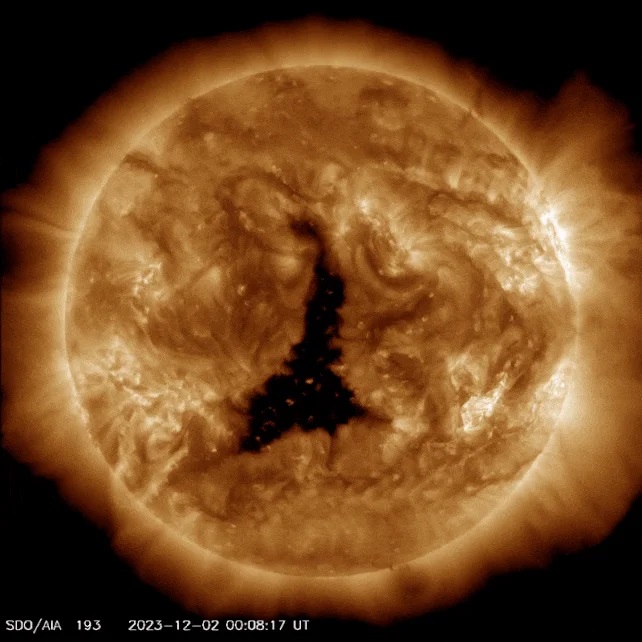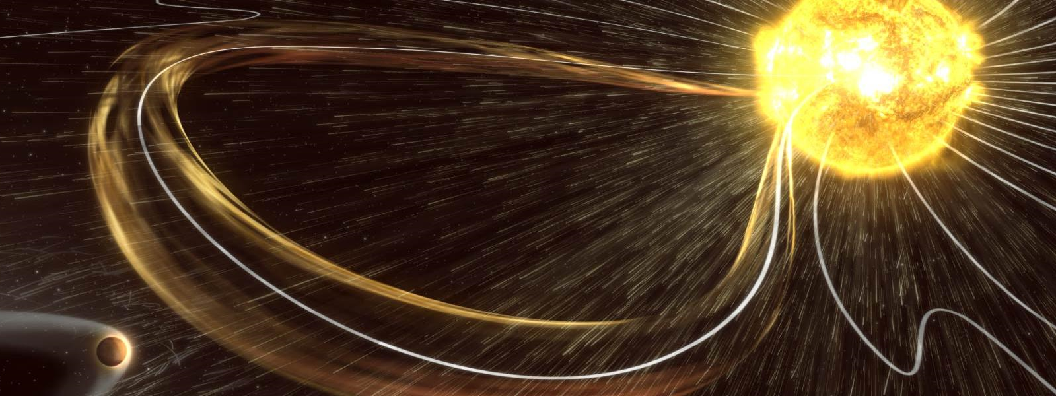Auroras, which are observed even in Ukraine during epochs of high solar activity, cause collisions of our planet with clumps of charged particles ejected by the Sun. It is clear that for the last one, such emissions also do not pass without a trace — some of them leave huge “black holes”. One of them was observed in the visible hemisphere of our sun in early December. For its huge size and unusual shape, journalists have already nicknamed it the “Eye of Sauron”.
Of course, if we look at the Sun through an ordinary telescope protected by a special filter, we will not see a “hole” in it, no matter how big it is. Scientists register these structures when photographing in the X-ray or far ultraviolet range of the electromagnetic spectrum. It allows scientists to observe the plasma heated to millions of degrees that makes up the solar corona — the rarefied shell of our luminary, extending directly above the photosphere, visible in the optical range.

Plasma is a state of matter in which it predominantly consists of an equal total charge of electrons (negatively charged particles) and positive ions. In the case of solar plasma, the last ones are mainly protons — the nuclei of hydrogen atoms. An important property of this state is that such a substance conducts an electric current, which means it is “sensitive” to magnetic fields. During solar flares, magnetic lines of force overlap, and their loops are sometimes “carried” far into outer space, dragging huge amounts of matter with them. Such phenomena are known as coronal mass ejections. As a result, the solar corona loses large volumes of hydrogen, and some parts of it become more rarefied. They are the ones that look dark on X-rays.

The length of the hole that passed the central solar meridian on December 2 was about 800 thousand km, which was 15% more than the radius of the Sun and almost 65 times the diameter of the Earth. Due to the huge size of the plasma cloud ejected from it, it turned out to be “smeared” in outer space, so when it collided with our planet, the disturbance of the geomagnetic field turned out to be weaker than originally expected. On the evening of the same day, December 2, it caused auroras in fairly low latitudes, but since the sky was overcast in the north of Ukraine, we could not see them. On December 4 and 5, they were observed in the circumpolar regions.
But with very powerful coronal ejections, the influence of solar plasma on the earth’s magnetic field can be so great that it will lead to disruption of radio communications and failure of energy supply systems. Therefore, it is definitely impossible to say that the appearance of “black holes” in the Sun does not portend anything bad for us…
Follow us on Twitter to get the most interesting space news in time
https://twitter.com/ust_magazine


